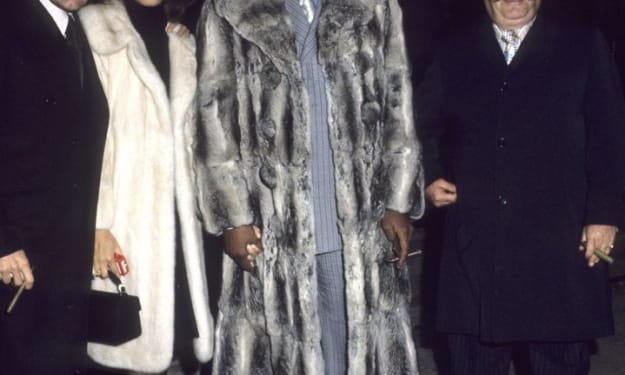Jeffrey Dahmer: The Milwaukee Cannibal
Dahmer was murdered by a fellow inmate in a Wisconsin prison

Jeffrey Dahmer, infamously known as the Milwaukee Cannibal, was a serial killer who shocked the world with his gruesome crimes. Over a span of 13 years, Dahmer murdered and dismembered 17 males, committing acts of necrophilia and cannibalism with some of his victims' remains. His heinous acts, discovered after his arrest in 1991, revealed a horrifying glimpse into the mind of one of history's most notorious serial killers.
Early Life and Descent into Darkness
Jeffrey Dahmer was born on May 21, 1960, in Milwaukee, Wisconsin. His childhood, though seemingly normal, was marred by neglect and isolation. As a teenager, Dahmer exhibited signs of troubling behavior, including a fascination with dead animals. This macabre interest foreshadowed his later atrocities.
Dahmer's descent into darkness began in earnest in 1978, shortly after his parents' divorce. At 18, he committed his first murder, luring a hitchhiker named Steven Hicks to his home. Dahmer bludgeoned Hicks with a dumbbell and later dismembered his body. This marked the beginning of a spree that would last for over a decade.
The Murders
Dahmer's modus operandi involved luring young men, often from marginalized communities, to his apartment with promises of money or alcohol. Once there, he would drug his victims before strangling them. His methods grew increasingly depraved as he experimented with preserving body parts and performing crude lobotomies on some of his victims in an attempt to create submissive "living zombies."
Cannibalism became a part of his ritual, and he consumed parts of his victims to feel closer to them and to fulfill his fantasies. The grim details of Dahmer's actions shocked the nation when they came to light, revealing a pattern of brutality and inhumanity that seemed almost beyond comprehension.
Arrest and Trial
Jeffrey Dahmer's reign of terror came to an end on July 22, 1991, when one of his intended victims, Tracy Edwards, managed to escape and flag down police. When authorities entered Dahmer's apartment, they found photographs of dismembered bodies, human remains, and other evidence of his gruesome acts. The discovery sent shockwaves through the community and the world at large.
In court, Dahmer confessed to his crimes in chilling detail. He was charged with 15 counts of murder, to which he pleaded guilty but insane. The court, however, rejected his insanity plea, finding him legally sane at the time of the murders. In February 1992, Dahmer was sentenced to 15 consecutive life terms in prison. In May 1992, a 16th consecutive life sentence was added for the murder he committed in 1978.
Life in Prison and Death
Jeffrey Dahmer's notoriety followed him into prison, where he became a target for other inmates. Despite being kept in isolation initially, he was eventually moved to a less secure unit where he could interact with other prisoners. His presence in the general population was controversial, given the nature of his crimes and the intense media attention surrounding him.
On November 28, 1994, Dahmer met a violent end. He was attacked and killed by a fellow inmate, Christopher Scarver, at the Columbia Correctional Institution in Portage, Wisconsin. Scarver, who was also serving a life sentence for murder, claimed that he killed Dahmer because of the nature of his crimes and because Dahmer had allegedly taunted other inmates and prison staff.
The Legacy of Jeffrey Dahmer
The story of Jeffrey Dahmer remains one of the most disturbing chapters in the history of criminal pathology. His crimes have been the subject of numerous documentaries, books, and films, each attempting to understand the mind of a man capable of such horror. Dahmer's actions also raised questions about law enforcement's ability to prevent such atrocities, as there were several missed opportunities to stop him before his final arrest.
For the families of Dahmer's victims, his death brought a grim sense of closure. While justice had been served in the legal sense, the emotional scars left by his actions endure. The impact of his crimes continues to resonate, serving as a stark reminder of the depths of human depravity and the importance of vigilance in protecting the vulnerable.
In the end, Jeffrey Dahmer's life and crimes are a dark testament to the potential for evil within the human soul. His story is a cautionary tale about the dangers of unchecked impulses and the necessity of societal safeguards to prevent such tragedies. The legacy of his horrific acts lives on as a somber chapter in the annals of criminal history, compelling us to confront the darkest aspects of human nature.
About the Creator
Enjoyed the story? Support the Creator.
Subscribe for free to receive all their stories in your feed. You could also pledge your support or give them a one-off tip, letting them know you appreciate their work.






Comments
There are no comments for this story
Be the first to respond and start the conversation.